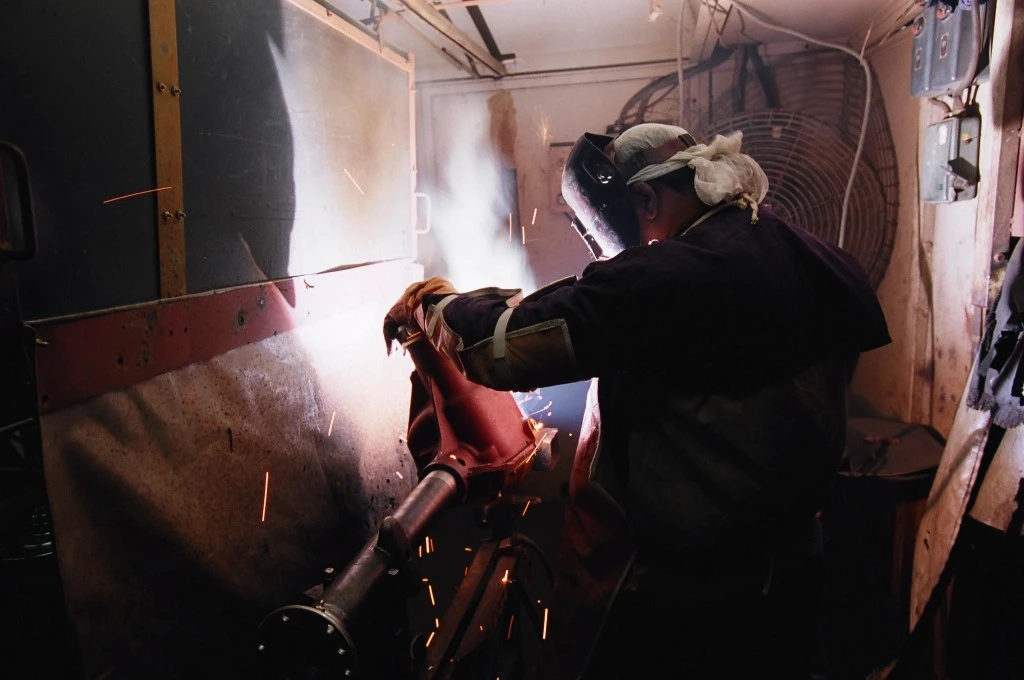By now, it is common knowledge that India’s nationwide lockdown has disrupted businesses across all sectors. We, at TechnoServe, expect that states will enforce partial lockdowns to contain re-emergences of community infection at different points of time. This ‘start-stop’ system in the Indian economy will continue until the pandemic is contained through mass vaccination or improved disease preparedness and response. The need for an interim start-stop economy will prevail for 18-24 months, and is expected to result in an economic slowdown through 2020-22.1
Graduates—who have historically struggled in India’s job market—will face heightened challenges during this period. Based on our projections, additional incumbent graduates will be subject to unexpected terminations or pay freezes, while those entering the workforce between 2020 and 2022 will see fewer job opportunities. However, before we dive into the details of COVID-19’s expected impact on graduates, it is important to understand the dynamics of India’s job market before the onset of COVID-19.
Related article: Managing your career during COVID-19
A snapshot of graduate employment pre-COVID-19
As of January 2020, we estimate that there are 120 million individuals with graduate degrees or above in India. Around 74 million of these graduates are employed, with approximately 40 percent in the formal sector and 60 percent in the informal sector. The government, private sector, and the education sector are the largest formal sector employers, with roughly 11 million, 10 million, and eight million graduates, respectively. Within the private sector, the largest employers are financial services and information technology enabled services, which are estimated to have approximately three million and two million graduates each.
Although the total number of graduates has grown in recent years, higher education has not guaranteed better employment outcomes. In fact, in 2019, graduates faced an unemployment rate of 17 percent, which is more than double the national average. The situation is worse for female graduates, who faced a 35 percent unemployment rate between May and August 2019.
The high unemployment rates reveal a core mismatch between college training and skills sought by employers. Graduates often lack requisite hard and soft skills required in the workplace due to poor education standards, coursework that focuses too heavily on theoretical subjects, and limited internship opportunities. This mismatch has become more pronounced in recent years, as businesses rapidly shift towards digital solutions. Graduates without 21st century skills, such as digital literacy, find it increasingly hard to secure a job.
These employment challenges are amplified among certain groups:
- Women, who make up roughly 42 percent of graduates, face unemployment and workforce dropout rates that are twice as high as that of their male counterparts. Socio-cultural barriers remain a predominant driver of gendered employment outcomes, as women graduates are often expected to be homemakers in spite of their educational qualifications.
- Rural graduates, who make up approximately 33 percent of the pool of incumbent graduates, face unemployment and workforce dropout rates that are 1.5 to 2 times higher than that of their urban counterparts. Rural-urban disparities stem in part from limited graduate-level jobs outside of major cities.
- Graduates from marginalised backgrounds struggle to secure formal sector jobs. Those from poorer families face greater socio-cultural barriers at school, which hinder academic and post-graduation outcomes. For example, these students often have fewer relatable mentors, limited networks into formal sector careers, and face greater pressure to follow their family trades. Moreover, they may lack access to infrastructure, such as smartphones, laptops, or high-speed internet, which are required to build 21st century skills.
Graduates across all of these groups will grow over the next few years. As of 2018, there were 37.4 million students enrolled in graduate programs and beyond. From this figure, we estimate that 7.5 to 8 million new graduates will be added to the workforce annually between 2020 and 2022.2 Of these new graduates, approximately 48 percent will be female and 60 percent will be from rural institutions.3

Graduates—who have historically struggled in India’s job market—will face heightened challenges during this period. | Picture courtesy: Pixabay
The impact of COVID-19 on graduate employment
The COVID-19-induced economic downturn will further hurt employment prospects for both incumbent and new graduates. To identify appropriate interventions, we conducted three-year projections to assess COVID-19’s impact on graduate employability.
Graduates completing their degrees between 2020 and 2022 are expected to see 3.1 million fewer job openings as they enter the workforce.
These forecasts were constructed using a combination of graduate employment data, historical benchmarks, first-hand interviews, and analyst reports on COVID-19’s expected impact across industries and sub-sectors. The forecasts provide directional insight on the magnitude of employment loss, as well as the groups of graduates who are most vulnerable to COVID-19-induced job reductions.
Overall, we project that up to 4.4 million incumbent graduates will lose their jobs in 2020, with only 50 percent re-hired by 2022. Moreover, graduates completing their degrees between 2020 and 2022 are expected to see 3.1 million fewer job openings as they enter the workforce.
- Impact on incumbent graduates: Projected job losses will be split equally between the informal sector and formal sector. Within the formal sector, private sector jobs are expected to drive the majority of losses (1.2 million), with the most layoffs in financial services (0.4 million) and manufacturing (0.2 million). Although industries such as hospitality and tourism are anticipated to experience the greatest percentage increase in layoffs (up to 40 percent), the disproportionate impact on financial services and manufacturing is driven by the high absolute employment of graduates in these fields.
- Impact on new graduates from the classes of 2020-2022: Projected job reductions will be most severe for the class graduating in 2020, which is expected to face 1.5 million fewer job openings due to COVID-19. Across all three cohorts, job reductions are expected to be split between the informal sector (1.2 million) and formal sector (1.9 million). In the formal sector, private sector jobs are projected to drive the majority of job reductions (0.8 million), with the greatest number of job reductions in financial services and IT / ITeS.
On aggregate, graduates in medium or small businesses are projected to experience greater job reductions (1.1 million by the end of 2022) versus those in large businesses (0.9 million). This is driven by the lower capacity of smaller organisations to maintain steady payroll during the economic crisis. From a geographic perspective, Maharashtra, Uttar Pradesh, and Tamil Nadu, are expected to drive 35 percent of the job reductions country-wide, as these are the key states where graduates work.
Graduates in medium or small businesses are projected to experience greater job reductions versus those in large businesses.
Additionally, male graduates are projected to see more than twice as many job eliminations as female graduates in absolute terms, due to the higher baseline count and the higher pre-COVID-19 employment rates of male graduates. Female graduates, however, will continue to face greater overall unemployment and workforce dropout rates.
Overall, we expect COVID-19 to heighten the importance of 21st century skills, as digital literacy and higher-order communications skills become critical to support work-from-home models that are necessary under India’s start-stop economy.
How can we mitigate job reductions for graduates?
We recommend a series of short-term and long-term interventions to mitigate COVID-19’s immediate impact on graduate employment and improve the job readiness of students in the long run. These interventions require close collaboration with a variety of stakeholders, including the government, corporate recruiters, and development organisations working in skill development and employability.
In general, we suggest targeting the interventions below towards vulnerable groups. This includes the intersection of graduates who face greater overall employment challenges i.e., women graduates, rural graduates, graduates from marginalised backgrounds, and incumbent and new graduates who are projected to see higher levels of COVID-19-induced job reductions.
- For the government: Central and state governments can drive businesses to hire and retain fresh graduates by introducing multi-year tax rebates, testing and scaling up free/low-cost public data access services (such as Wi-Fi hotspots and kiosks), and other incentives.
- For corporate recruiters: Corporate recruiters can develop their talent pools by providing remote internship opportunities for fresh graduates. It might also be worthwhile to target graduates based closer to their office locations—since restrictions on mobility and migration are expected to continue in the two-year term—and provide support by way of transport, technology, and salary advances to their graduate hires.
- For development organisations working in skill development and employability: Given the constraints on conducting on-site skills trainings, skilling projects should consider shifting to online skills trainings, adapting their curriculums to the needs of online and digital mediums, and equipping graduates to participate effectively in online workplaces.
Related article: The blindspots in India’s skilling programme
- For governments: Central and state government responses to the challenges of youth employability in a post-COVID-19 era must be coordinated, demand-driven, and scalable. In the spirit of its Digital India programme, the government can secure employment opportunities for the country’s incumbent and upcoming graduates, by strengthening the digital and online infrastructure of colleges and local skilling institutes, and by developing low-cost e-learning and mobile technology solutions.
- For corporate recruiters: Corporate recruiters stand to gain from adapting their hiring and operating systems to the challenges and opportunities of remote work. They will need to transition employee hiring, on-boarding, and trainings to online platforms, in order to ensure the seamless integration of new recruits to their organisations. Given the increased burden of care as a result of COVID-19, corporates would also do well to provide increased flexibility to employees, by way of flexible work schedules, extended work-from-home privileges, and so on.
- For development organisations working in skill development and employability: As workplaces go online, development organisations must recognise the increased importance of digital, advanced communications, and other 21st century skills in making graduates job-ready, and address these needs in their skills and employability curricula, assessments, and modes of instruction.
- For more details on TechnoServe’s analysis of the likely scenario in India as a result of COVID-19, refer here.
- Based on TechnoServe’s graduate employability model. Sources: AISHE 2018-2019 Report by Ministry of Human Resource Development; 2011 Census; The India Employment Report by the IMA; CMIE
- The percentage of graduates from rural institutions (60 percent) is higher than the number of graduates living and working rurally (33 percent), as there are a significant number of rural universities, but post-graduation, graduates tend to move to cities in search of employment.
—
Know more
- Explore TechnoServe India’s report on the suggested response to COVID-19’s impact on graduates, and watch Punit Gupta deep-dive into the findings of the report.
- Read this report on the state of working India in 2019.
- Learn more about how the COVID-19 crisis has led to a spike in the country’s unemployment rate.
Do more
- To learn more about or support TechnoServe India’s COVID-19 livelihoods interventions, write in to TechnoServe India’s country director Punit Gupta at pgupta@tns.org.







